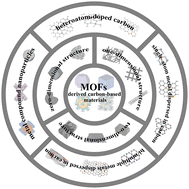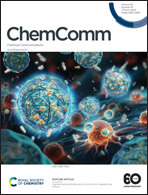Structural and compositional analysis of MOF-derived carbon nanomaterials for the oxygen reduction reaction
Abstract
The development of low-cost and efficient cathode catalysts is crucial for the advancement of fuel cells, as the oxygen reduction reaction (ORR) on the cathode is constrained by expensive commercial Pt/C catalysts and a significant energy barrier. Metal–organic frameworks (MOFs) are considered excellent precursors for synthesizing carbon nanomaterials due to their simple synthesis, rich structure and composition. MOF-derived carbon nanomaterials (MDCNM) inherit the morphology of their precursors at low dimensional scales, providing abundant edge defects, larger specific surface area, and excellent electron transport paths. Furthermore, the rich composition of MOFs enables the carbon nanomaterials derived from them to exhibit various physicochemical properties, including stronger electron gaining ability, oxygen affinity, and a higher degree of graphitization, resulting in excellent ORR activity. However, a more detailed analysis is necessary to understand the advantages and mechanisms of MDCNM in the field of the ORR. This review classifies and summarizes the structure and different chemical compositions of MDCNM in low dimensions, and provides an in-depth analysis of the reasons for their improved ORR activity. Additionally, the recent practical applications of MDCNM as cathode material in fuel cells are introduced and analyzed in detail, with a focus on the enhanced electrochemical performance.

- This article is part of the themed collection: Emerging Trends in MOFs


 Please wait while we load your content...
Please wait while we load your content...